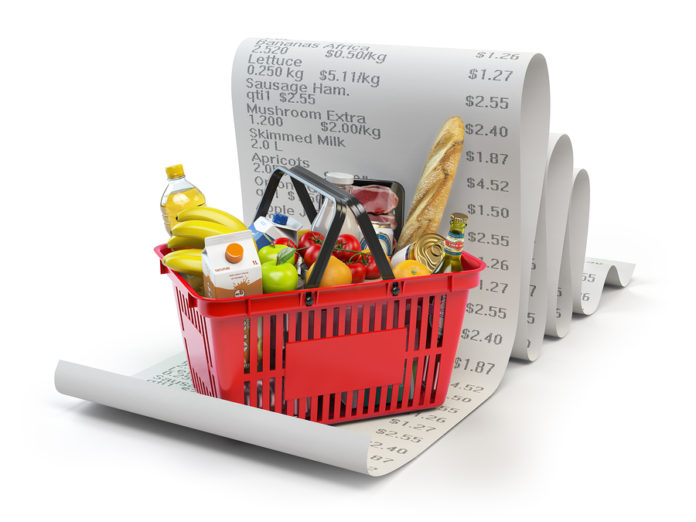
By John Gilbo, Pricefx
The food and beverage industry has much to gain this year if they play their pricing cards right. Any player must ask themselves when it comes to their pricing strategy: what makes my organization tick?
There are a number of pricing metrics to track to keep businesses thriving with a coordinated pricing strategy. Targeted and granular “what-if” predictions and simulations can help organizations understand the potential impact of price changes. Strategic moves like these can help businesses clearly anticipate what things might look like for the next 12-month period so they can anticipate when they would need to make certain price tweaks, like increasing prices on high-value food and beverage products, such as ethically sourced coffee and chocolate, plant-based meats, and protein powders. Which way these prices shift could dictate the bottom line.
Based on close work and observations with food and beverage organizations, these are the most important pricing metrics to track this year.
Contracts adjusted to lag time
In a market with major mood swings, keeping contracts as up-to-date as possible is a must for meeting revenue goals. If costs go up, be ready to inform customers through a new contract to raise prices as soon as possible.
The reverse also applies – if the cost of an ingredient drops, notify customers and reduce their contracted prices as soon as possible. Failure to do so could lead to a loss of profit and, even worse, a loss of customers. They will hear that those price decreases were not passed on, lose trust, and move on.
Invoice payment times
This one is easy to forget yet hard to fix when things go wrong. Successful food and beverage companies have a strategy to perfect their invoice payment process. Simply said, they pay invoices on time or even early. The repercussions of not doing so are that an invoice could be re-issued at a higher rate, which is entirely possible given the rate of the change expected in 2022.
Lead time
Keep track of your lead time at the most granular level. Food service distributors have been facing millions of dollars in margin compression because they calculated annual lead times. Those who understand, calculate, and act quickly on changes in lead time allow their business to maximize profit because they can cut their losses and get orders out of the door quickly and efficiently.
This year, opt for monthly or, even better, weekly re-calculations of lead times. Watch out for and keep pace with expected price fluctuations.
Production downtime
The push and pull of keeping production up is a balance you want your eye on at all times. Continue to ask yourself questions:
- Are my machines running smoothly?
- Is my production plan well-maintained?
- Are we keeping production up to speed?
Promotion costs
Take a good look at your high-demand goods. Is your watermelon flavored soda water or high-protein granola bar worthy of a discount? If your customers see these items as a premium product, then reconsider discounting them.
Clearly defining objectives for promotions, and measuring performance against these goals, is a simple exercise many companies fail to do.
Workforce
Get a solid headcount. Especially in today’s workforce, employers need to carefully consider how they use their teams. Understand how many workers you have and that each one helps in ensuring production runs at the pace required to maintain food and beverage costs and contracts.
Track wholesale to retail
Shifts from wholesale to retail will be inevitable this year. This provides an avenue to potentially increasing prices, so be on the lookout.
Competitive and market price index
Market price index is a great indication of how your products, categories, and brands are positioned in the market. Competitive price is an even better metric that will be valuable for understanding overall performance.
Inventory turnover
Food industry pricing leaders should look to this metric to help with price decisions because it can be especially useful to strategize on slow-moving categories or items. Understanding this metric will help you identify the cause of the problem and how to fix it.
Gross margin rate
Pricing is a major part of this calculation. If you are not addressing cost changes appropriately, gross margin rate will decline. In this case, you will need to examine variable and manufacturing costs to determine why margin is declining. Ask yourself questions like:
- Have costs as a percentage of net sales increased year over year?
- Which line items are affected and why?
- What about fixed costs?
Inflation is top-of-mind right now in every sector, including food and beverage, which makes paying attention to these pricing metrics more relevant than ever. But it’s a must in any economic climate.
 John Gilbo is a retail and e-commerce pricing expert at Pricefx, who formerly led pricing strategy at Kirkland’s, Academy Sports + Outdoors, and Safeway. At Pricefx, he puts into practice his deep experience in pricing strategy, client account management, software procurement & implementation and financial analysis.
John Gilbo is a retail and e-commerce pricing expert at Pricefx, who formerly led pricing strategy at Kirkland’s, Academy Sports + Outdoors, and Safeway. At Pricefx, he puts into practice his deep experience in pricing strategy, client account management, software procurement & implementation and financial analysis.








